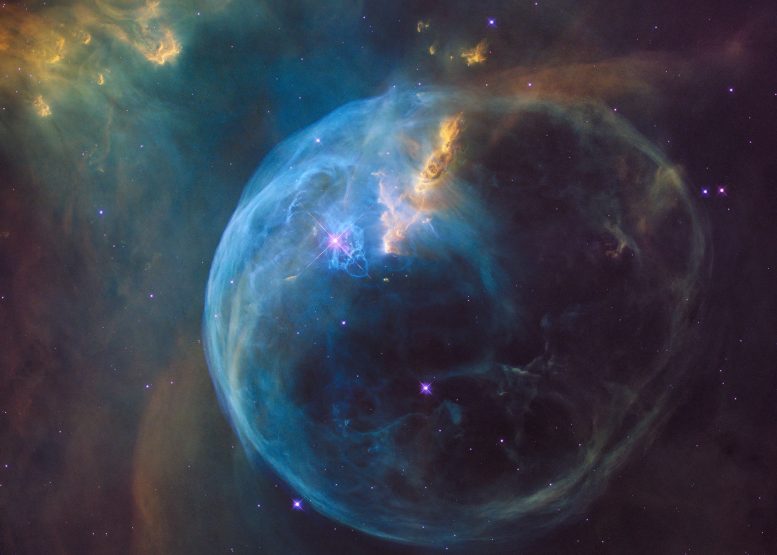
Hubble astronomers captured this party balloon-like sphere of gas being blown into space by a super-hot, massive star. The Bubble Nebula, or NGC 7635, is caused by hot gas escaping into space from a star 45 times more massive than the Sun. NASA, ESA, and the Hubble Heritage Team (STScI/AURA)
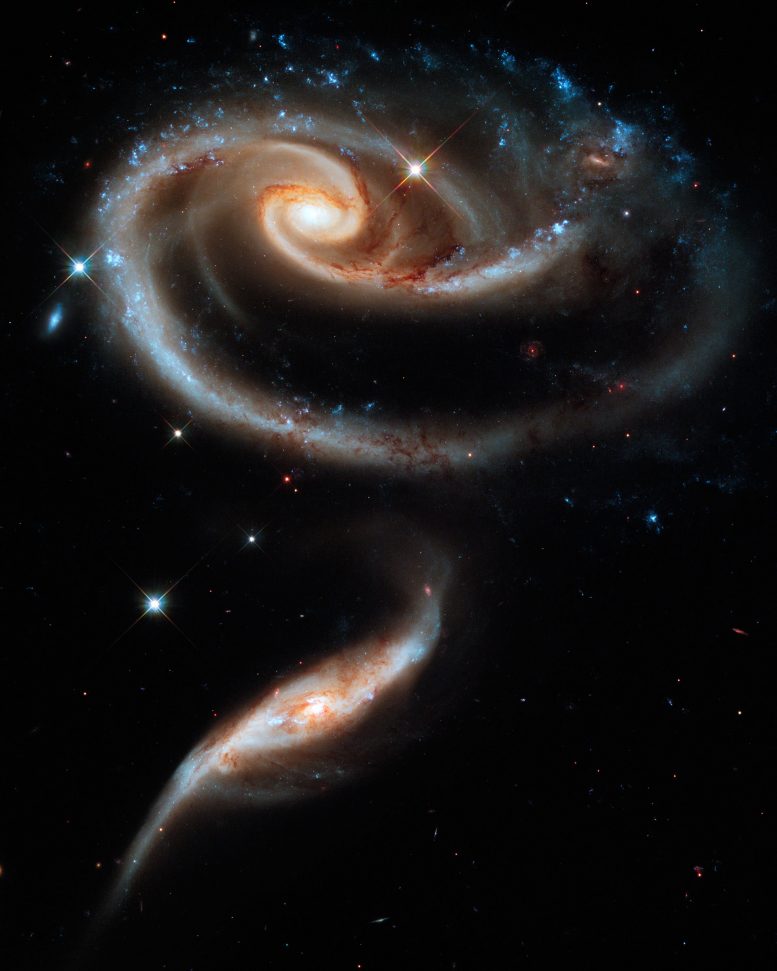
This image shows the interacting galaxy pair called Arp 273. The disk of the larger galaxy is distorted into a rose-like shape by the gravitational pull of the companion galaxy below it. A swath of blue, jewel-like points across the top is the combined light from clusters of bright and hot young stars. NASA, ESA, and the Hubble Heritage Team (STScI/AURA)
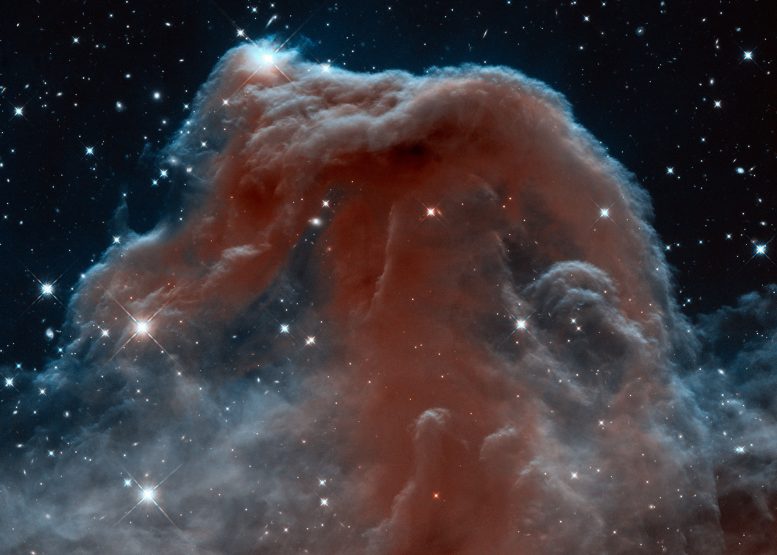
The Horsehead Nebula, shadowy in optical light, appears transparent and ethereal when seen here at infrared wavelengths. This pillar of tenuous hydrogen gas laced with dust is resisting being eroded away by the radiation from a nearby star. The nebula is a small part of a vast star-forming complex in the constellation Orion. The Horsehead will disintegrate in about 5 million years. NASA, ESA, and the Hubble Heritage Team (STScI/AURA)
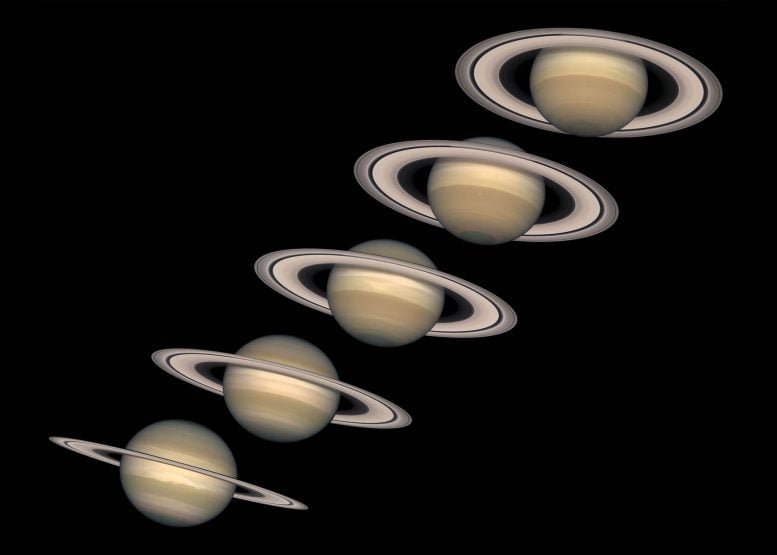
As Saturn takes its 29-year journey around the Sun, its tilt allows us to see its rings from different perspectives. Saturn’s tilt also gives it seasons. The lowest image on the left shows the northern hemisphere’s autumn, while the uppermost right image shows the winter. NASA and the Hubble Heritage Team (STScI/AURA); Acknowledgment: R.G. French (Wellesley College), J. Cuzzi and J. Lissauer (NASA/Ames), and L. Dones (SwRI)
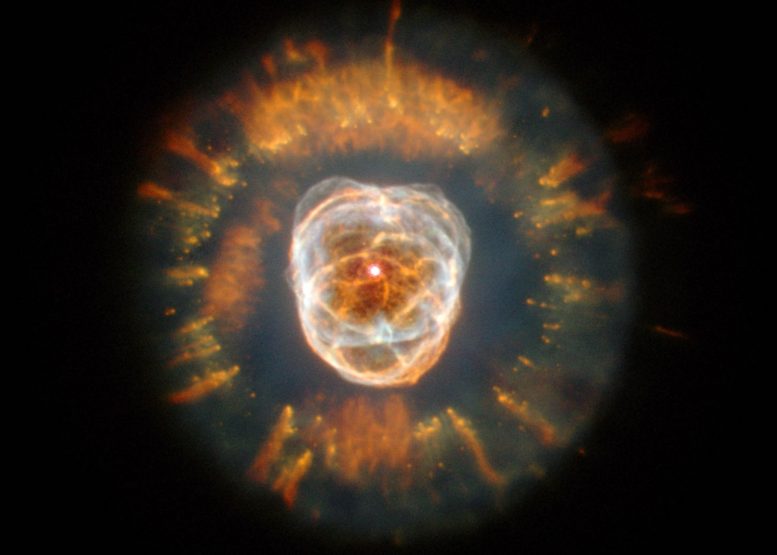
This planetary nebula began forming 10,000 years ago, when the dying star at its center began flinging out bubbles of gas and matter. NASA, Andrew Fruchter and the ERO Team [Sylvia Baggett (STScI), Richard Hook (ST-ECF), Zoltan Levay (STScI)]
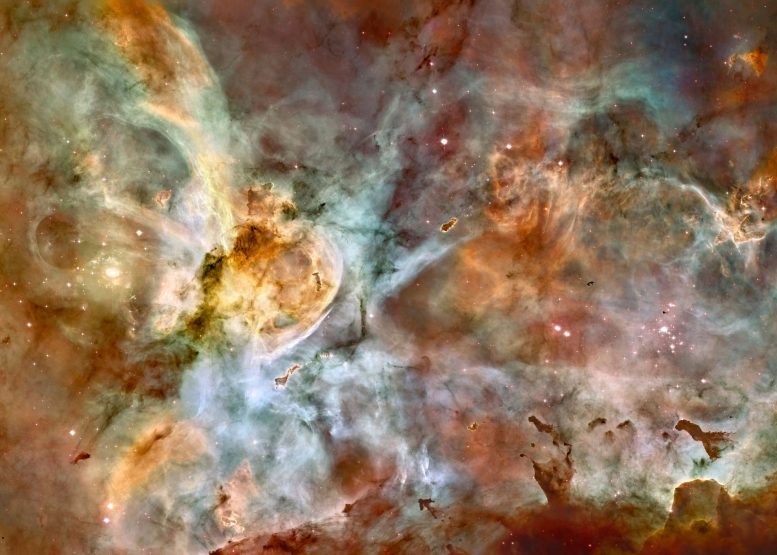
This image, released for Hubble’s 17th anniversary, shows a region of star birth and death in the Carina Nebula. The nebula contains at least a dozen brilliant stars that are 50 to 100 times the mass of our Sun. Credit for Hubble Image: NASA, ESA, N. Smith (University of California, Berkeley), and The Hubble Heritage Team (STScI/AURA); Credit for CTIO Image: N. Smith (University of California, Berkeley) and NOAO/AURA/NSF
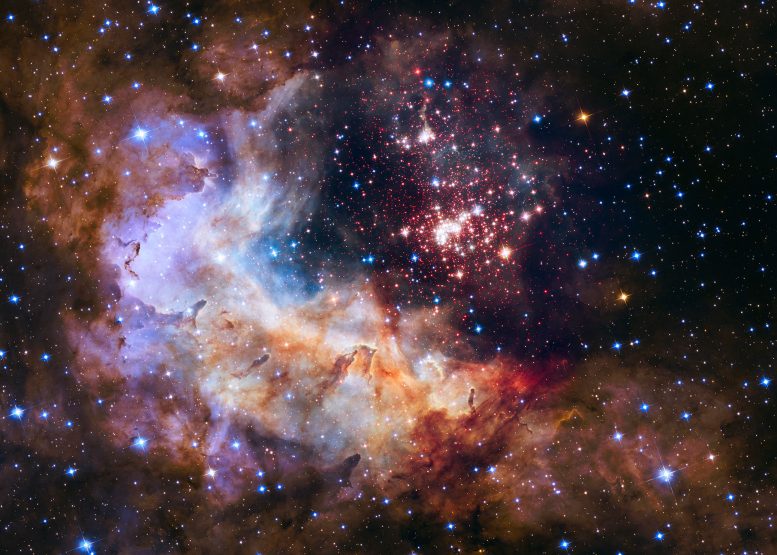
Hubble’s 25th-anniversary image features a giant, sparkling cluster of about 3,000 stars called Westerlund 2. The cluster resides in a raucous stellar breeding ground known as Gum 29, located 20,000 light-years away from Earth in the constellation Carina. NASA, ESA, A. Nota (ESA/STScI), and the Westerlund 2 Science Team
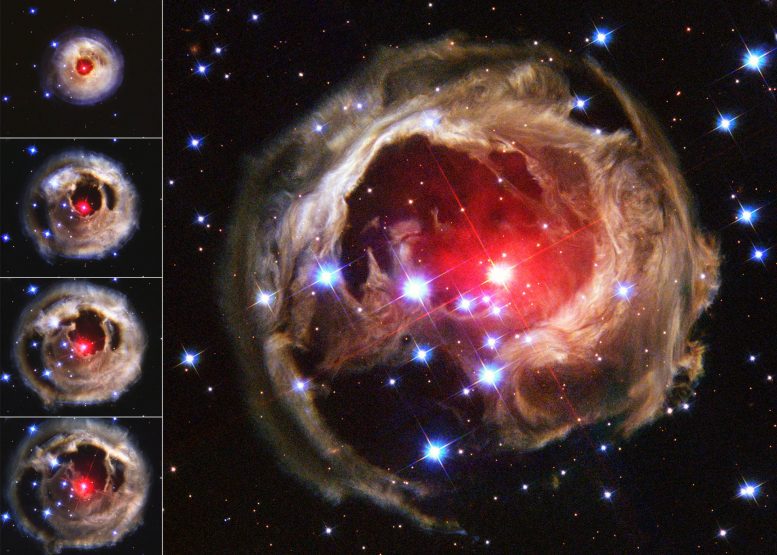
The red supergiant star in the center of this image brightened suddenly for several weeks in 2002, illuminating dust that may have been ejected from the star during a previous explosion. NASA, ESA, and the Hubble Heritage Team (STScI/AURA); Acknowledgment: H.E. Bond (STScI)
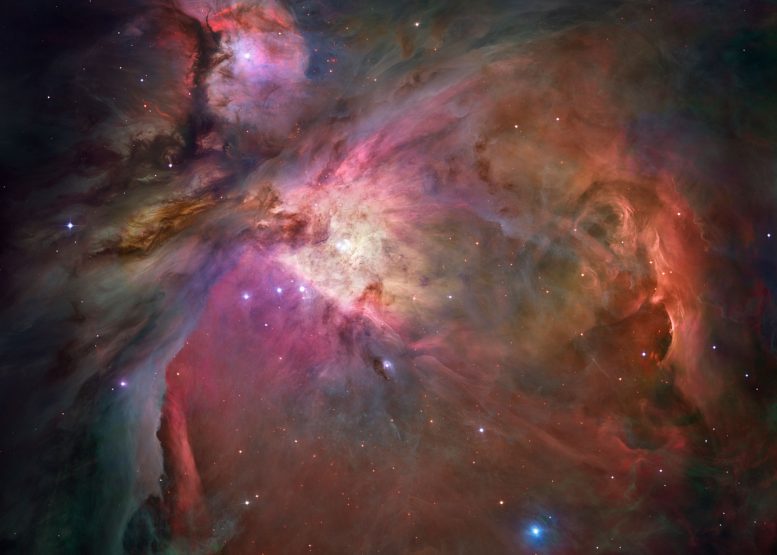
The Orion Nebula is a cavern of tumultuous gas and dust where thousands of stars are forming. The energy released by the young stars transforms their place of birth, whipping their surroundings into fantastic forms. NASA, ESA, M. Robberto (STScI/ESA) and the Hubble Space Telescope Orion Treasury Project Team
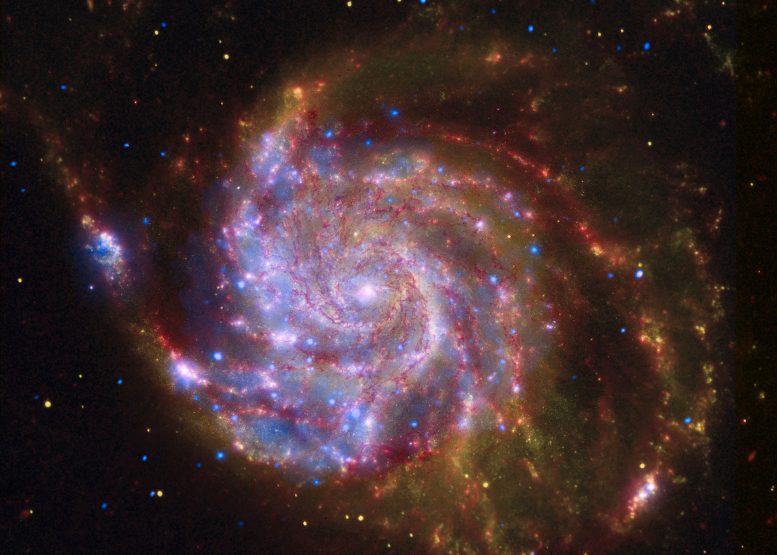
This image of the spiral galaxy M101 is a composite of views from the Spitzer Space Telescope, Hubble Space Telescope, and Chandra X-ray Observatory. Red indicates infrared light, yellow is visible, and blue is X-ray.
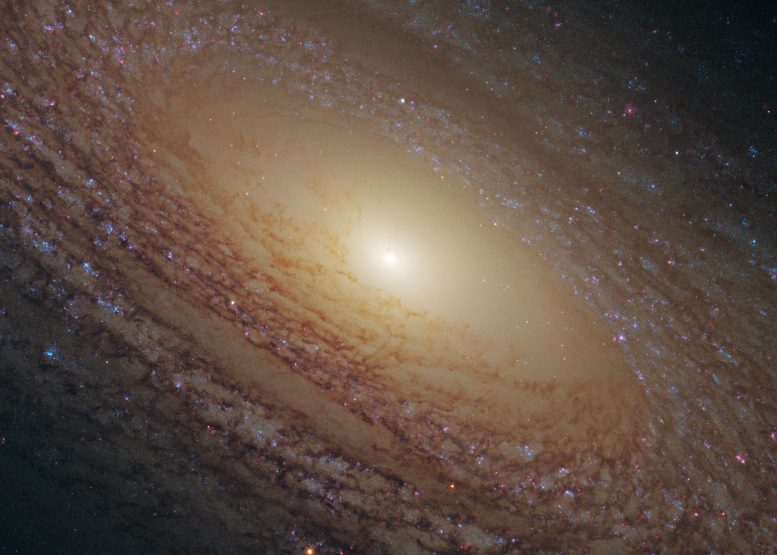
Spiral galaxy NGC 2841, which lies 46 million light-years away in the constellation of Ursa Major, reveals a majestic disk of stars and dust lanes. NASA, ESA, and the Hubble Heritage (STScI/AURA)-ESA/Hubble Collaboration. Acknowledgment: M. Crockett and S. Kaviraj (Oxford University, UK), R. O’Connell (University of Virginia), B. Whitmore (STScI), and the WFC3 Scientific Oversight Committee

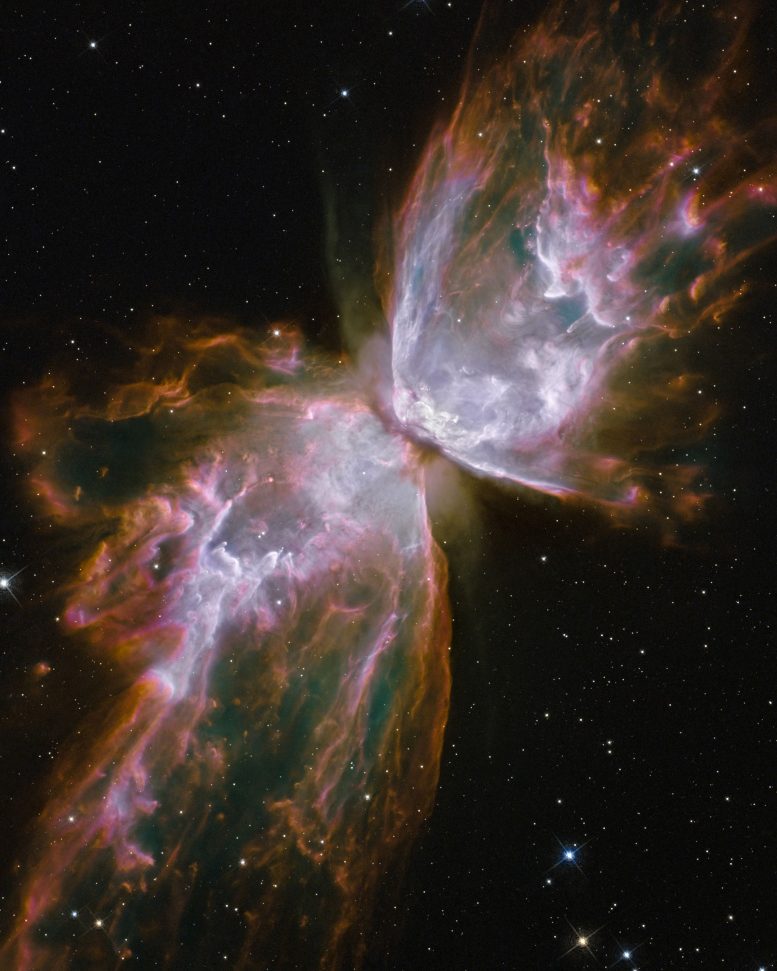
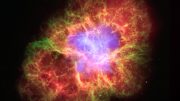
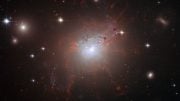
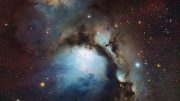
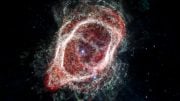
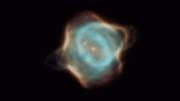

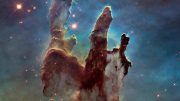
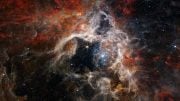
All I can say is “STUNNING!”
Keep posting
Our Universe IS a beautiful place. Thank You All who take these Awesome Pictures & share them for all to see!
Is all this created for man and for him? Does man belong here?